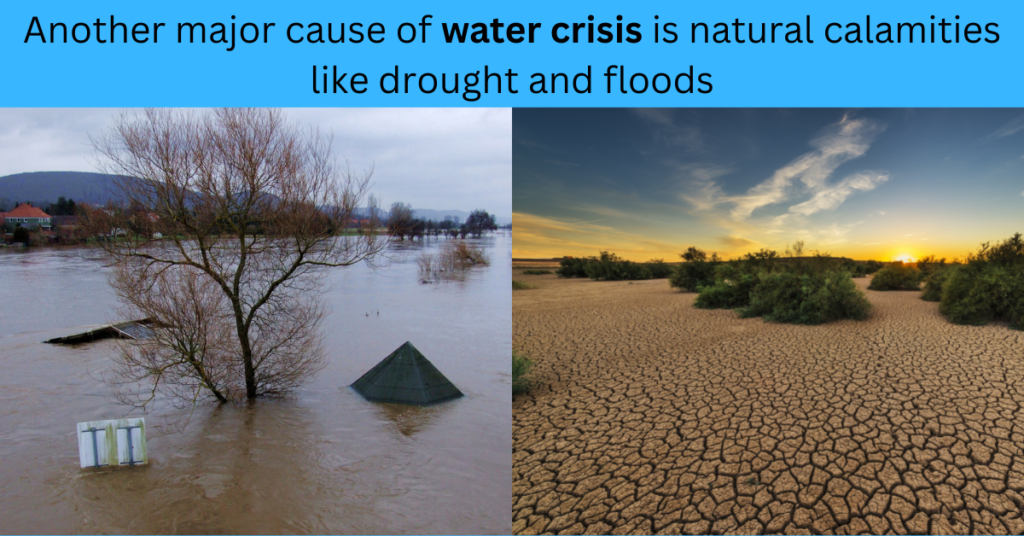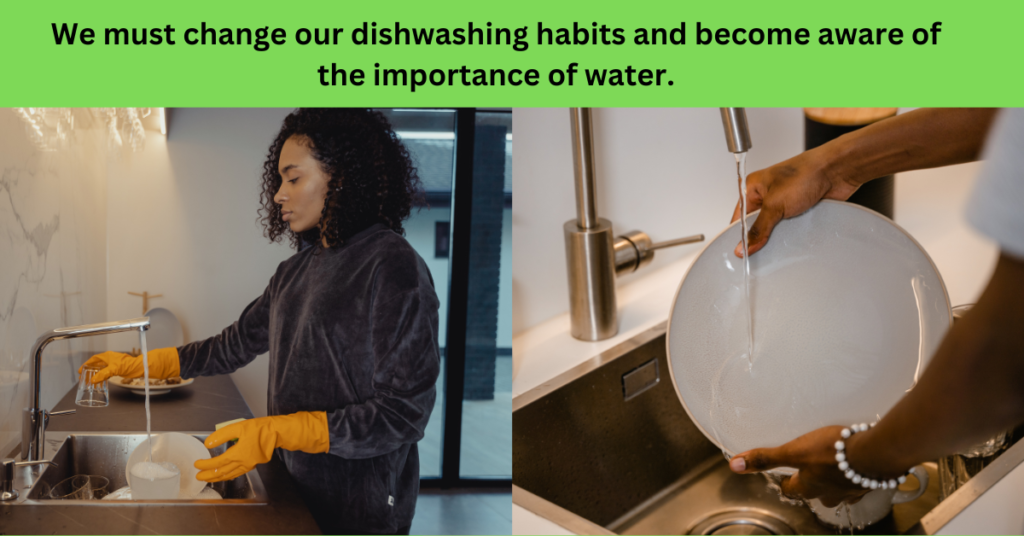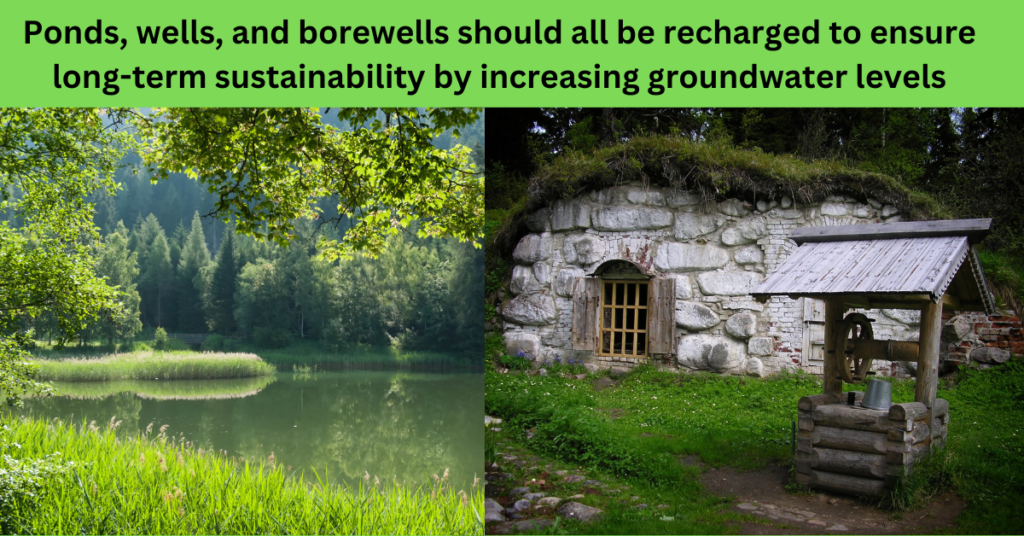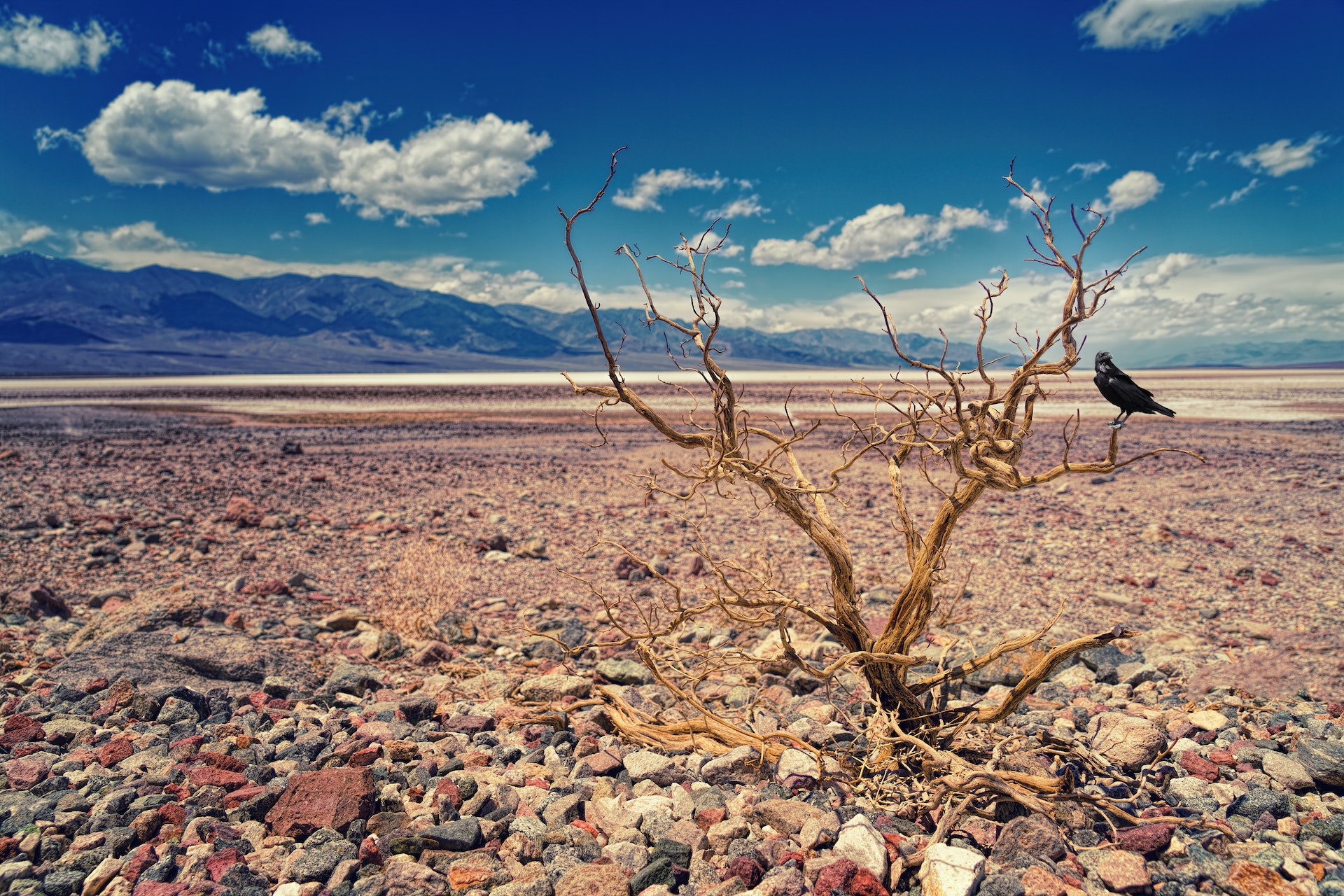Many parts of the world are experiencing a water crisis, which is one of our major social problems. Having food and water to drink is quite essential for people to stay healthy and live happily. In times of water scarcity, people suffer untold hardships. As for India, despite the fact that many big rivers flow through parts of India, including some perennial rivers, the country suffers from water shortages for cultivation and drinking. Krishna, Godavari, Cauvery, and other rivers can be found in the south, whereas Ganges, Brahmaputra, and Indus can be found in the north. Although we have plenty of rivers, we waste much of the water by sending it to the sea. Our knowledge of how to use these natural resources to their maximum advantage is inadequate, despite having many natural resources like water, minerals, abundantly growing crops, etc.

If we ask what are the causes of the water crisis, the increasing population is one of the main reason, so the available water is insufficient to meet the needs of the people. It is necessary to find more efficient ways to provide drinking water to the people and it is necessary to investigate whether it is feasible to construct more reservoirs. When the summer is more severe than usual in some years, the result is that what was thought to be a large water reservoir shrinks into a pond. Humans and animals are suffering without water and they are scrambling for drinking water. It is a human right to have access to water. There is enough water in the world for everyone’s basic personal and domestic needs. In human activities, less than ten percent of water is used for personal and domestic needs. Then why there is a water crisis? Because there is no proper distribution network, and water is not equally distributed. Countries like Israel, Lebanon, Iran, Jordan, Kuwait, and Saudi Arabia are countries that are facing severe water shortages in the world and India’s situation is no different. What we can see in India today are two extremes. Either the country is suffering without water due to severe drought or heavy rains are causing floods. While the north sometimes suffers from severe floods, the south suffers from severe drought. People suffer without enough water in the cultivated fields and even without access to drinking water. This happens and vice versa.

Water crisis- reasons
If we ask what are the reasons for the water crisis or what could be the possible reasons for water scarcity, the answers are many.
Climate change
Climate change is one of the main reasons for the acute water scarcity we are facing today. Climate change will affect water availability to a great extent as the climate is changing day by day. Extreme climate change indicates that the climate in each location is becoming more unstable as a result of global warming. When we talk about climate change, we usually hear and discuss heavy rains but on the other hand, there is another serious villain lurking called drought. Climate change is occurring in unexpected and unusual ways. A year ago, a study report by the Intergovernmental Panel on Climate Change pointed out that climate change is accelerating worldwide. Phenomena such as untimely rains, floods, snowfalls, heat waves, wildfires, and sea surges convince us that it is literally true. Climate change not only affects drinking water but also food grain production. Experts point out that the reason for this is the rupture of the ozone layer and global warming.
- Greenhouse gases pose the greatest threat to the ozone layer.
- Gases, including carbon dioxide, released into the atmosphere by fossil fuels block radiation from the Sun and keep infrared radiation from the Earth in the Earth’s atmosphere.
- This creates holes in the ozone layer.
- This is a major cause of global warming and climate change.
- Higher temperatures due to global warming will cause rapid evaporation and loss of moisture from the earth.
- Along with this, the unscientific and imprudent land use patterns make the drought so severe.
- This climate drought can easily evolve into an agricultural and water resource drought.
- Heat waves are taking hold as a result of global warming.
- In addition, human-induced global warming and urbanization will worsen the situation.
- All these aggravate water scarcity and create a water crisis.
- Although we cannot control the climate according to our will, we should be able to moderate the effects of the extremes of the weather through appropriate procedures.
- Only then can we survive the severity of climate disasters.
- One way to do this is to control the production and emissions of greenhouse gases that cause climate change.
- But it remains to be seen how much it will be implemented.
Drought and floods
Another major cause of water crisis is natural calamities like drought and floods. Everyone knows what drought means. A drought is an extended period of low rainfall. It is a slow disaster where water scarcity occurs due to a lack of rain. Drought can be caused by climatic conditions such as lack of rain or excessive heat. The high temperature of land and water and also climate causes drought. Prolonged droughts lead to areas without even drinking water and water scarcity can cause many long-term public health problems. Drought and subsequent water shortages cause many health problems. Droughts can have serious impacts not only on human, animal, and plant health but also on agriculture, the economy, energy, and the environment. There are many types of drought. Or if we talk about the four levels of drought, there is moderate drought. then there is a severe drought that creates a few more problems. Next is a very severe drought which causes a lot of problems and fourth is an abnormal drought. We cannot even tolerate moderate drought and then more drought is unimaginable.
If we talk about floods, sometimes when it starts raining, it’s raining. The road, pond, and river will all become one, and houses and farms will be underwater. Crops are rotten or produce insufficient yields leading to famine. Unlike in the past, now it is raining heavily and flooding is usually caused by either heavy rain, rapid melting of snow due to extreme heat, or tropical cyclones or tsunamis. Let’s see how floods cause water scarcity. Flooding due to heavy rains or rising sea levels pollutes water bodies and destroys wells and ponds. When toilets and sewage treatment plants are damaged in floods, water sources become contaminated with salt water or feces. When floods occur, freshwater reservoirs are damaged, resulting in a water crisis. We always hear news of wells and ponds falling underground due to heavy rain.
Increasing population and construction activities
Due to the increasing population and construction activities, there is a global increase in the demand for clean water. The growing population is a big problem. Population growth is one of the basic factors causing the water crisis. The day-by-day increase in population is increasing and the high demand for water for domestic, industrial, and agricultural purposes is also increasing.
- When we talk about domestic use, we need water for drinking and preparing food, and also for bathing, washing, and many other household activities.
- Apart from that, agriculture, irrigation, animal husbandry, and fish farming all increase the demand for water consumption.
- As the population grows, new houses and industries spring up like mushrooms, and intensive industrialization and urbanization lead to water scarcity.
- The construction industry is a sector that uses significant amounts of water.
- Most of the water used in this construction process comes from groundwater, which further complicates the water crisis.
- Not only that, waste from construction sites contaminates drinking water.
- Dirty water runoff from construction sites also carries other pollutants into water bodies and pollutes them.
- During construction sometimes the soil is moved and sometimes deposited and sometimes vegetation is also removed.
- Such activities create a lot of debris and pollution directly and indirectly at the site.
- These sediments are carried into water bodies by rain or wind.
- This leads to water quality degradation and water scarcity.
- The establishment of industries leads to further exploitation of water resources.
- Industries use large quantities of water and not only that, but they also discharge industrial effluents into water bodies and pollute them.
- This not only worsens the condition of fresh water sources but also deteriorates the water quality.
Excessive use and wastage of water
In some cases, large amounts of groundwater are used for domestic, agricultural, or industrial purposes, threatening the long-term sustainability of groundwater resources. In places where fresh water is scarce, excessive use or wastage of domestic water should be highly regulated. In such places, water used for washing dishes and washing clothes should be used for agriculture. How much water is wasted from reservoirs due to broken pipes and other untimely repairs? This wasted water can harm ecosystems, especially in areas where water scarcity is common. Everyone should be convinced that water is precious and should not be wasted.
Rainwater is not utilized optimally
We use only a small percentage of rainwater. By making better use of rainwater, the water crisis can be solved on a large scale. In times of extreme drought, we tend to talk about the benefits of rain harvesting and how rainwater simply runs off without being used. But with the onset of the rainy season, all our rhetoric about rain harvesting tends to wash away with the rainwater. What we can see here is a lack of proper management.
There are many more reasons. This water crisis has been created by us over the years. While on the one hand sand mafias systematically mine and plunder rivers, on the other hand, forests are being cut down without any control. What was once vast paddy fields are now filled with buildings and houses. Once these paddy fields have helped a lot in recharging the groundwater.

How the water crisis affects us all
- Scarcity of drinking water affects human health and life in a very harmful way.
- Because we cannot live without water.
- The impact of water scarcity not only affects humans but also animals, birds, and plants alike.
- Due to the water crisis, people are left without water for bathing, washing, and even drinking.
- When it comes to families, water scarcity affects everyone, but women and children are affected more.
- As children, they are more vulnerable to diseases caused by contaminated water.
- The case of women is particularly difficult as women and girls spend more than half of their day carrying water from long distances for their families.
- Or they have to wait for water tankers to arrive.
- Crop failure in severe drought leads to food grain deficit and will also reduce the availability of available food.
- This leads to a huge financial collapse.
- Food shortages caused by water shortages can lead to other serious problems.
- Thus, water scarcity leads to food scarcity and starvation.
- People facing water shortages are also stuck with food shortages.
- They never prosper and they suffer a lot in these difficult times.
- When there is a water crisis, it does not take long for the normal water supply to become unsanitary.
- Drinking dirty water can lead to deadly diarrheal diseases, including cholera and typhoid fever, and other waterborne diseases.
- Not only that, water scarcity kills aquatic life and destroys water resources.
- When severe water shortages are experienced for long periods of time, some animals and birds may die of starvation and thirst, and may even become extinct.
- The same is true of plants, with many plants unable to grow and reproduce adequately, resulting in serious biodiversity loss.
- Water scarcity also increases migration, and overcrowding in some areas and causes conflict.
- When the land becomes unsuitable for living or farming due to water scarcity, people lose their livelihoods and are forced to migrate to other places for survival.
- Water supply becomes more unstable and uncertain and can lead to conflict and riots.
- Drought can have serious consequences on the environment.
- What’s more, a water crisis can even threaten global peace and security.
- Water scarcity and its attendant problems are one of the main reasons for the growing internal and international conflicts across the country.

Amazing Solutions to Water Crisis
We have seen the causes of the water crisis and its consequences. Now we need to understand what is the solution to this. Let’s first see what I as an individual can do for this. Let’s see how much water we use each day and for what. Our need for water starts when we wake up in the morning. There are people who drink a glass of water immediately after waking up, then go to the washroom, then brush their teeth and take a shower with lots of water. It is better not to talk about the kitchen. Have you ever thought about how much water we lose when we open the tap (running water) and wash the dishes? Similarly, how much water is used for washing clothes, watering plants, and maintaining crops?
- Turn off the water while brushing your teeth and shaving.
- When washing dishes or vegetables, instead of opening the tap and letting the water flow freely, you can wash them in a wash basin.
- The amount of water wasted in washing dishes at home is huge.
- We must change our dishwashing habits and become aware of the importance of water.
- Make sure the automatic dishwasher is fully loaded.
- Likewise, use the washing machine only for full loads.
- Periodically check taps and pipes for leaks.
- Do not bathe in a lot of water for a long time, but take a quick bath in a little water, for that use a shower that conserves water.
- Use the water used for washing dishes and washing clothes in gardens and vegetable gardens, treated or untreated, without being wasted.
- Separate special wastewater treatment plants (Activated Sludge Plant (ASP)) should be prepared to treat the wastewater.
- A number of low-cost technologies are available for wastewater treatment and recycling purposes that can be implemented in high-density residential areas such as flats.
- It should be encouraged to the fullest.
- This purified water can be used for all other purposes except drinking water.
- Implement a dual flushing system instead of a single flush system in washrooms.
- Installation is a bit expensive but can significantly reduce water consumption and lower water bills.
- Rainwater tanks or rain barrels for rainwater harvesting should be present in every house.
- Rain barrels are the easiest and cheapest method, especially for homes.
- Those who build new houses must also build rainwater tanks.
- Plant trees that increase groundwater levels.
- The neem tree, Ashoka tree, Tamarind tree, etc. are some of the trees that can raise the groundwater level.
- If you don’t get that, plant some other trees.
- Prevent deforestation and promote afforestation.
- Excessive use of groundwater often for agricultural or industrial purposes results in depletion of the groundwater table.
- But the unfortunate truth is that these water resources are not being recharged commensurate with overuse.
- Ponds, wells, and borewells should all be recharged to ensure long-term sustainability by increasing groundwater levels.
- A recharge well can be dug near the well and the rainwater from the roof can be filtered and made flow into it to recharge the well and raise the water table.
- Similarly, ponds and tube wells should be recharged.
- All of these can be recharged using runoff from pavements and roads.
Final thoughts
Humans cannot live without water, just like they cannot live without air. In addition, it is one of the most promising business opportunities in the world. What oil was in the past decades, water or fresh water will be in the coming decades. Several progressive states have launched special missions to conserve water. With rainwater harvesting, some of our farmers are now able to supply water for domestic use and irrigation all year round. In order to replenish the rapidly depleting groundwater resources, rainwater must be harvested. Water scarcity affects the entire nation and the world, with the intensity varying from region to region. Linking the northern and southern rivers is the permanent solution to ending the water shortage in India. A viable opportunity exists in India for this due to its topography and mountain ranges. In addition to promoting trade and tourism, it will also control floods. If we do not change the way we manage our water – and we need to change them quickly – we will face a severe water crisis within the next decade, and we will have neither the cash nor the water needed to support our economy and population growth.
Reference: Wikipedia
Image credit: Canva
For more informative essays visit: Short Essays



